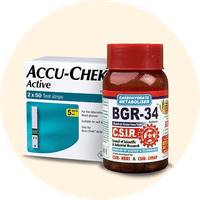Rs.276for 1 jar(s) (100 gm Cream each)
Available in other variants
Composition FOR Moisturex
Urea(10% w/w),Lactic Acid(10% w/w),Propylene Glycol(10% w/w),Liquid Paraffin(10% w/w)food interaction for Moisturex
alcohol interaction for Moisturex
pregnancy interaction for Moisturex
lactation interaction for Moisturex
medicine interaction for Moisturex
food
alcohol
pregnancy
lactation
medicine
No interaction found/established
No interaction found/established
Information regarding the use of Moisturex Cream with Urea, Lactic Acid, Propylene Glycol & Liquid Paraffin during pregnancy is not available. Please consult your doctor.
CONSULT YOUR DOCTOR
Information regarding the use of Moisturex Cream with Urea, Lactic Acid, Propylene Glycol & Liquid Paraffin during breastfeeding is not available. Please consult your doctor.
CONSULT YOUR DOCTOR
No interaction found/established
SALT INFORMATION FOR Moisturex
Urea(10% w/w)
Uses
How it works
Urea, a diamide of carbonic acid, works by dissolving the intercellular matrix (substance found between cells) which results in softening of dry and rough skin.
Common side effects
Erythema (skin redness), Skin irritation, Burning sensation, Stinging sensation, Itching, Hypersensitivity reaction, Rash, Local swelling
Lactic Acid(10% w/w)
Uses
Lactic Acid is used in the treatment of psoriasis, keratoses and dermatitis.
How it works
Lactic Acid removes the top layer of the dead skin cells and helps improve skin texture, reduce dark spots, smooth fine lines, and cleanse pores.
Common side effects
Application site tingling, Burning sensation, Erythema (skin redness), Irritation
Propylene Glycol(10% w/w)
Uses
Propylene Glycol is used in the treatment of dry eyes.
How it works
Propylene Glycol forms a protective layer over mucous membranes to relieve inflammation and/or irritation. Propylene Glycol acts as humectant as It holds up to three times its own weight in water.
Common side effects
Application site reactions (burning, irritation, itching and redness), Blurred vision
Liquid Paraffin(10% w/w)
Uses
Liquid Paraffin is used in the treatment of dry Skin and constipation. It relieves dry skin conditions such as eczema, ichthyosis and pruritus of the elderly.
How it works
Liquid Paraffin is an emollient (substance that softens or soothes the skin). It works by preventing water loss from the outer layer of skin. This relieves dryness and leaves the skin soft and hydrated.
Common side effects
No common side effects seen
SUBSTITUTES FOR Moisturex
12 Substitutes
12 Substitutes
Sorted By
 Rs. 210.90save 28% more per gm of Cream
Rs. 210.90save 28% more per gm of Cream Rs. 261.50save 9% more per gm of Cream
Rs. 261.50save 9% more per gm of Cream Rs. 112.50pay 17% more per gm of Cream
Rs. 112.50pay 17% more per gm of Cream Rs. 121.88pay 45% more per gm of Cream
Rs. 121.88pay 45% more per gm of Cream Rs. 271.88save 5% more per gm of Cream
Rs. 271.88save 5% more per gm of Cream
Expert advice FOR Moisturex
- Do not use urea in large amounts or for longer duration than recommended.
- Topical formulation of urea should be used only on the skin. Do not take it internally.
- Avoid contact with eyes, lips, and mucous membranes.
- Seek immediate medical attention if you develop allergic reactions: rash; difficult breathing; swelling of face, lips, tongue, or throat.
Frequently asked questions FOR Moisturex
Urea
Q. Does Urea cause cancer?
No. Urea does not cause cancer.
Lactic Acid
Q. How to use Lactic Acid?
Before using Lactic Acid, clean and dry the affected area. Gently and thoroughly massage it into the skin. Be careful not to get the medication in your eyes or mouth. If Lactic Acid gets in your eyes accidentally, wash with plenty of water and call your doctor if your eyes are irritated.
Q. What should prompt me to discontinue Lactic Acid?
You should discontinue Lactic Acid and consult your doctor if you experience severe local irritation, which means severe redness, dryness and itching and stinging/burning sensation.
Q. What precautions should be followed while applying Lactic Acid?
Use Lactic Acid only on your skin. Keep it away from areas like your eyes, eyelids, lips, mouth and inside of the nose. If the medicine comes in contact with any of these areas, wash the affected area with water immediately. Avoid using Lactic Acid on scratched or eroded skin and open wounds. Take care when using Lactic Acid on sensitive areas of skin such as your neck. Lactic Acid can make your skin more sensitive to the harmful effects of the sunlight. So, avoid the use of sunbeds/lamps and minimize the time you spend in the sun. You should use sunscreen and wear protective clothing while using Lactic Acid. Avoid contact with hair as Lactic Acid has bleaching properties. It can even bleach dyed or colored fabric, furniture or carpeting.
Propylene Glycol
Liquid Paraffin
Q. Is Liquid Paraffin good for dry skin?
Yes, Liquid Paraffin helps to moisturize dry skin.

















